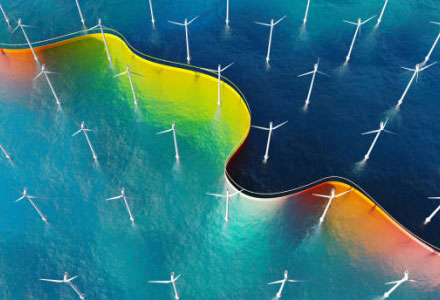Fortress Investment Group remains focused on identifying and creating opportunities to minimize and off-set the environmental impact of our business. Fortress worked with a 3rd party climate platform to measure our corporate carbon footprint and offset our Scope I, Scope II, and select Scope III emissions1. We are proud to announce that through these efforts, Fortress has achieved carbon neutrality, successfully off-setting the company’s emissions for the full year of 2022.
In 2021, to offset Scope I emissions, Fortress purchased high-quality removal credits that support the Communitree Carbon Program, an award-winning reforestation program and the largest reforestation initiative in Nicaragua. The program works with thousands of smallholder farmers to create long-term income opportunities from growing trees on underused parts of their land. Over the course of 2022, the Communitree program sourced over 30 million seeds in order to achieve planting across Nicaragua. Farmer recruitment for 2022 was started earlier than ever, and the project was expanded to two new operational regions: Santo Tomas and Diriamba. As a result of this work, 3,326 farmers are now reforesting lands all across Nicaragua, with 1,187 new farmers joining for the 2022 season. In 2022 alone, these farmers planted an estimated 6 million trees and reforested over 4,700 hectares of land.
For 2022 Scope I emissions, Fortress continued participating in global reforestation efforts by purchasing high-quality removal credits that support Trees for Global Benefits (“TGB”), an award winning long-running cooperative carbon offsetting program in Uganda which combines community-led activities to increase carbon sequestration, encourage sustainable land-use practices, and provide farmers with performance-based payments. Participating farmers receive training and attend workshops to identify forestry activities that are suitable to their needs. TGB currently engages ~26,000 small holders families across 73 communities. As a result of these initiatives farmers working with the Trees for Global Benefits program have helped remove over 3.8 million tCO2.
For Scope II emissions, Fortress purchased Renewable Energy Certificates (RECs) in each geography in which we currently operate. Finally, for Scope III emissions, Fortress extended its participation in nitrous oxide (N20) destruction by purchasing N20 destruction credits sourced from an adipic acid plant located in the most polluted county in Florida. Adipic acid is a key component of nylon 66, which is processed into fibers to make carpeting, car tires, clothing and more. Under existing operations, adipic acid production results in an exhaust that contains nitrous oxides, which are 298x as potent as CO2. This project involved installing an additional absorption column called a Thermal Reactor Unit (TRU) in the exhaust section of the adipic acid plant. The TRU generates heat to separate nitrous oxide pollutants intro nitrogen and oxygen, which are naturally occurring atmospheric gases. The credits purchased by Fortress go directly to funding the installation of the TRU. Independent verification of the project is conducted by a third-party independent project engineer and environmental specialist. The specialist is also responsible for ensuring that the proper offset methodology is being followed and that the number of tons claiming to be abated are, in fact, being abated.
1 Select Scope III emissions include business travel (3.6), employee commuting (3.7), and waste (3.5). Emissions methodology calculates emissions based on spend or usage depending on the activity type. Line-item business activity data, including data sets on employees, offices, and financial data, was mapped to appropriate emissions factors (EF). The study measured emissions in CO2e, or carbon dioxide equivalents, which includes all greenhouse gasses, such as carbon dioxide (CO2), methane (CH4), and nitrous oxide (N2O).
